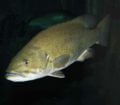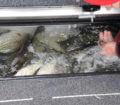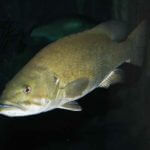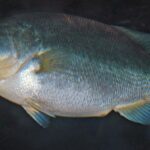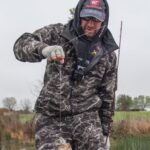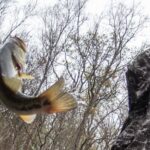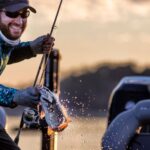Editor’s Note: During the spring of the year, high water and cool weather are often a nightmare for fishermen. However, if you’re like me, you have to fish when you have a chance to fish. You can’t change the fishing conditions. So, you need to learn to fish in bad weather and bad water conditions. In 3 days this spring, Center Hill Reservoir in central Tennessee had risen 16 feet. My friend, outdoor writer and guide, Jim Duckworth, had invited me to bass and crappie fish at Center Hill. My favorite tool I learned about there was a StowMaster (https://www.norsemenoutdoors.com/product-category/stowmaster/) Tournament Series foldable dip net that I’ve really enjoyed using. We were staying at Edgar Evins State Park (http://tnstateparks.com/parks/about/edgar-evins) – a beautiful resort overlooking the lake. The weather had been in the 70s. So, I only had packed one pair of blue jeans. The rest of my wardrobe consisted of shorts and t-shirts. I sure was glad I’d packed my Browning (www.browning.com) Gore-Tex lightweight rain suit. It kept me dry and warm. My guides for the day were David Bell from Murfreesboro, Tenn., and Martin Rather of Mount Juliet, Tenn.
 The best way to learn a new lake if you’ve never fished there before is to study maps, go on the internet, gather as much information as possible, talk to others who have fished the lake you’re about to fish and look at the land contours and the terrain around the lake. To really learn a lake well, you need to study the lake during the spring, the summer, the winter and the fall.
The best way to learn a new lake if you’ve never fished there before is to study maps, go on the internet, gather as much information as possible, talk to others who have fished the lake you’re about to fish and look at the land contours and the terrain around the lake. To really learn a lake well, you need to study the lake during the spring, the summer, the winter and the fall.
On the day I fished with David Bell at Tennessee’s Center Hill Reservoir, we pulled up to a little point. Immediately, we started catching bass. “I’ve caught bass on this point before,” Bell reported. “I saw the point and studied it during the drought of 2016. This point comes off a bluff and turns into pea gravel and big chunk rock. Our boat is in 110 feet of water, and we’re casting our lures up into 25 feet of water. Don’t forget that the 25 feet of water that we’re fishing on this trip was actually 12 feet of water 3 days earlier. So, we want to work our baits all the way down the point and let them drop off the edge. After our lures start to fall about 10 feet, we can reel them in and make other casts. We’ve caught some smallmouths this morning. Since the spawn is over, I think the smallmouths are moving out of the backs of the pockets, headed out to the main river channel.” Bell and I caught a few fish that morning – both smallmouths and largemouths.
At noon, I left Bell’s boat and started fishing with Martin Rather of Mount Juliet, Tennessee. Bell and I had been fishing points; but when Rather and I started fishing, we fished sheer rock bluffs. “I believe the water came up so fast here at Center Hill Reservoir that the bass haven’t had an opportunity to get acclimated to this cooler weather and rising water,” Rather said. “Many times on rock bluffs, you can find the bass easier than you can on other places on the lake. The bass can move up vertically quicker on a sheer rock bluff than they can on flats and points.
 “I prefer to fish for bass with a Big Bite creature bait (http://www.bigbitebaits.com) like a beaver. I use a tungsten slip sinker and a Daiichi 4/0 hook (www.daiichihooks.com). I rig my creature bait Texas style and cast it to the bluffs. I’ll let it fall 3-4 feet vertically down the bluff. Then I’ll start a slow retrieve to let the legs and the tentacles move. I’ve got two chances of taking a bass. They’ll either take the bait on that 4-foot fall, or they’ll look up and see the bait swimming and come up and take it.”
“I prefer to fish for bass with a Big Bite creature bait (http://www.bigbitebaits.com) like a beaver. I use a tungsten slip sinker and a Daiichi 4/0 hook (www.daiichihooks.com). I rig my creature bait Texas style and cast it to the bluffs. I’ll let it fall 3-4 feet vertically down the bluff. Then I’ll start a slow retrieve to let the legs and the tentacles move. I’ve got two chances of taking a bass. They’ll either take the bait on that 4-foot fall, or they’ll look up and see the bait swimming and come up and take it.”
Rather suggested that I fish a shaky head jig, rigged wacky worm style (hooking the plastic worm in the center of its body with the hook exposed) and throw this lure combination into the cuts in the bluff and let it fall slowly. “Normally, when we have current, the bass will hold in the cuts of a bluff and wait for a shad to come swimming by, or some worms that have washed off the top of the bluff to fall in,” Rather said.
Rather fishes Center Hill about twice a week. On an average day, he’ll primarily catch smallmouths and spotted bass. “During the end of April or the first of May, I’ll fish a jerkbait or a Zara Spook, because the bass are on their post-spawn pattern. The bass will be feeding heavily to try to rebuild their bodies after the spawn, and I’ll often get some tremendous topwater bites. I like the bone-colored Zara Spook, and there’s a new color that’s bone with a little bit of chartreuse on it that works well. If the water is extremely clear, I’ll fish the clear-color Spook with metal flakes on it. The other advantage of the Zara Spook and the jerkbait is that bass usually will start schooling in May. If I’m within casting distance of bass schooling on the surface, the Spook and the jerkbait are perfect lures to cast to schooling bass.
 “Often when I’m fishing the bluffs, if the shad move into the bluffs, I’ve seen huge schools of Kentucky spotted bass feeding on the surface. I never will forget a tournament I fished about 10-years ago. I caught 64 spotted bass out of one of those big schools before the school submerged. Those fish averaged between 1-3/4-pounds and 3 pounds.”
“Often when I’m fishing the bluffs, if the shad move into the bluffs, I’ve seen huge schools of Kentucky spotted bass feeding on the surface. I never will forget a tournament I fished about 10-years ago. I caught 64 spotted bass out of one of those big schools before the school submerged. Those fish averaged between 1-3/4-pounds and 3 pounds.”
To learn more about bass fishing and get John E. Phillips’ Kindle eBooks, print books and audiobook on bass fishing, go to https://johninthewild.com/books/#bass, or for Nook books, visit www.barnesandnoble.com.

